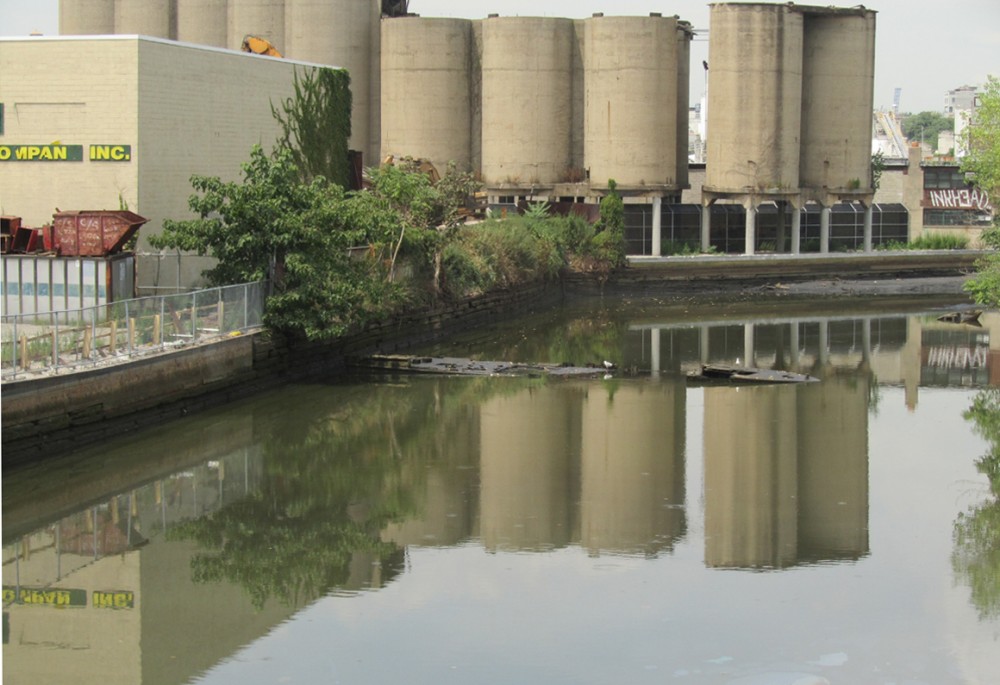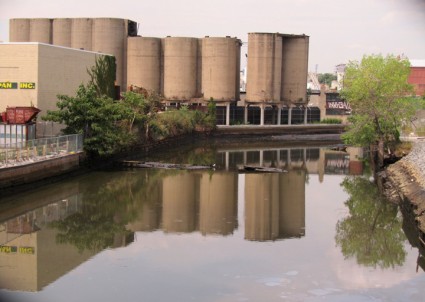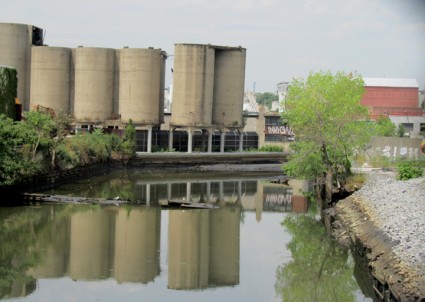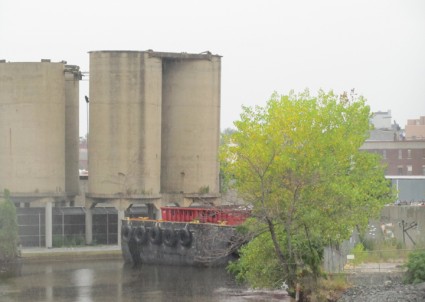BURNS BROTHERS COAL POCKETS
2nd Avenue
1915–38
Coal was one of the major freights shipped on the canal in the 19th and 20th centuries. Initially, coal was used for domestic heating and cooking, and it later was burned to generate electricity. Coal pockets were used to move and store the coal from barges on the canal to wagons and, later, trucks for delivery. The eight pockets closest to the water were built between 1915 and 1924, and by 1938 there were 10 more. These 40 and 50-foot tall structures are no longer used today but remain as relics of the canal’s crucial transportation role.



